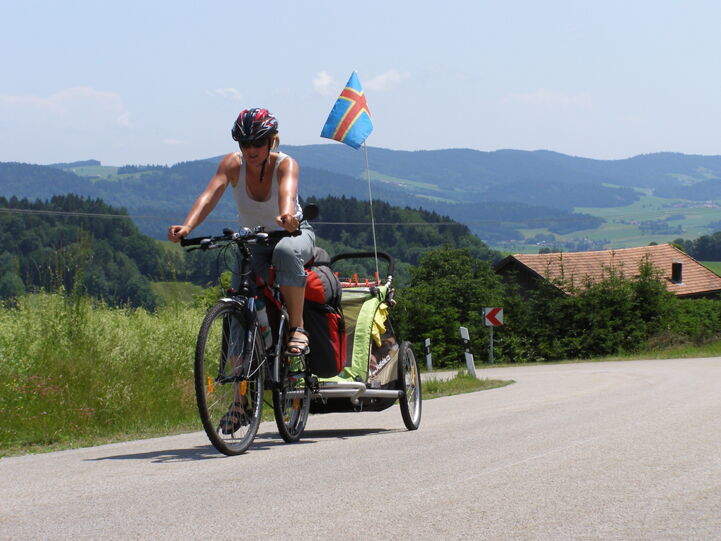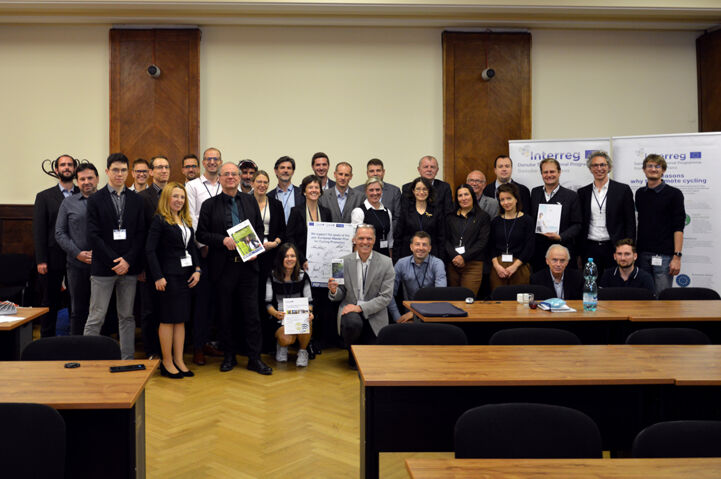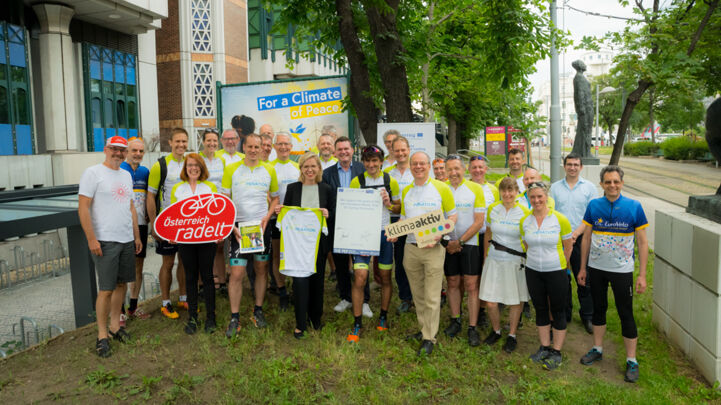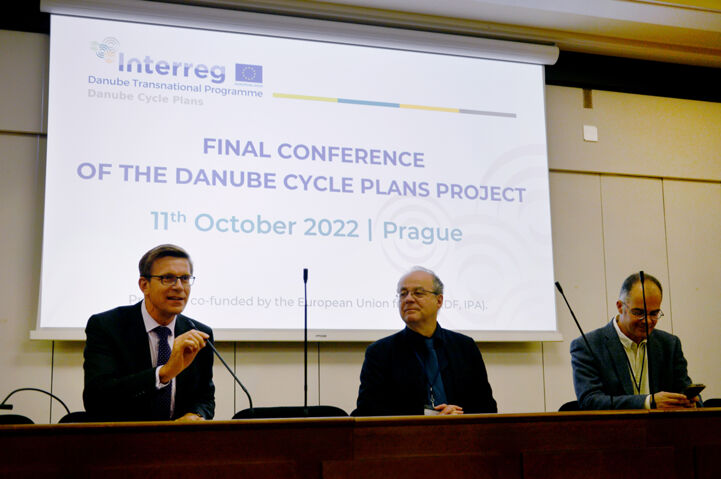Planning as a trigger for cycling development: learnings from Danube Cycle Plans
The Interreg Danube Region project ‘Danube Cycle Plans’ aimed to empower countries and regions to treat cycling as a fully-fledged mode of transport through proper strategic planning. Focusing on the Danube region from 2020 to 2022, it led to a macro-regional cycle route network and ambitious National Cycling Strategies and continued its lasting results as a finalist of the REGIOSTARS Awards 2023. Learn more about it and its legacy on cycling in Europe and EuroVelo in this interview with Jitka Vrtalová, the communication manager of the project.
What are the main project outputs of Danube Cycle Plans (DCP) during the three years of the project?
Danube Cycle Plans (DCP) aimed to enhance cycling conditions in the Danube Region, making it easier and safer for people to ride bicycles there. Spanning nine countries within the Danube Region – Austria, Czechia, Slovakia, Hungary, Romania, Serbia, Croatia, Slovenia, and Bulgaria – DCP had a comprehensive agenda. Over three years, the project focused on developing national cycling strategies, establishing the "DanuVelo" network, improving cycling infrastructure, and raising awareness about cycling overall.
Even though the project officially ended in December 2022, we still see its positive effects. The hope is that by making these changes, more people will choose to ride bikes, which is good for the environment and staying healthy. Plus, it's a lot of fun!

Why is strategic planning of interconnected cycle route networks so important to support cycling developments?
The Danube Cycle Plans (DCP) project revealed significant disparities in cycling conditions across the region. While some countries have well-established national cycling policies, others have yet to recognise the importance of cycling fully. This lack of coordination results in fragmented infrastructure development, with national cycle networks existing only in a few countries and varying wildly in quality. Additionally, different infrastructure design standards often fail to meet cyclists' needs, and responsibilities for cycling matters are divided among various sectors and administrative levels, often relegating cycling to a secondary concern.
Strategic planning for cycle route networks is crucial as it enhances cycling safety and convenience, thereby transforming the bicycle into a viable transportation choice and an integral component of an environmentally friendly transport system.
We need to work together to make sure there are good paths everywhere. I am very proud that the United Nations Economic Commission for Europe (UNECE) Expert Group on Cycling Infrastructure has taken the project outcomes as a basis and will expand them to other ECE countries.
Can you briefly present another activity of DCP that represents its long-lasting relevance?
As mentioned, the cycle route network is fragmented in many countries. To overcome these gaps in the nine countries, a transnational Danube Cycling Strategy and cycling network (known as “DanuVelo”) has been elaborated as the overall frame for National Cycling Plans.

Another focus was defining a harmonised, transnational bicycle infrastructure route network, including harmonised cross-border connections. A cost-benefit analysis method was developed, also considering the value of cycling in terms of health benefits.
The results of the network development and the assessment of current cycling infrastructure design standards were taken up by the newly established Expert Group on Cycling Infrastructure at UNECE, ensuring the transfer of project outputs. For an intense exchange, UNECE and World Health Organization (WHO) were involved through THE PEP (Transport-Health-Environment Pan-European-Programme) / EHP Partnership Healthy Active Mobility, as well as the European Cyclists’ Federation (ECF) when it came to infrastructure standards and EuroVelo routes.
How did you connect your work with EuroVelo and the experience of the European cycle route network accumulated in the past 25+ years?
We maintained communication and collaboration with the European Cyclists’ Federation (ECF) throughout the project. When planning the international interconnected network of cycling routes, we carefully ensured the inclusion of the transnational EuroVelo routes, drawing on the extensive experience accumulated over the past 25 years.
Furthermore, we did a promotional bike ride from Vienna to Ljubljana along EuroVelo 9 – Baltic-Adriatic, culminating in the international Velo-city Conference in June 2022. This journey, prepared in collaboration with National EuroVelo Coordination Centres (NECCs) from Czechia, Austria and Slovenia, served as a platform for engaging with representatives from cities and regions to underscore the importance of cycling for future sustainability efforts.

What could be the legacy of Danube Cycle Plans in the next years?

The Danube Cycle Plans project, spanning from 2020 to 2022, aimed to elevate cycling as an equal mode of transport through strategic planning. Notably, it facilitated the development of a macro-regional cycle route network and ambitious National Cycling Strategies, and earned recognition as a finalist for the REGIOSTARS Awards 2023. The project's enduring impact on cycling in Europe, exemplified by its collaboration with EuroVelo and the establishment of the DanuVelo network, highlights its significance for future initiatives.
The legacy of Danube Cycle Plans in the coming years could include a significant enhancement in the integration of cycling with public transport through initiatives like the Active2Public Transport project. By combining these modes of transport, we are not only reducing our carbon footprint by using more environmentally friendly options, but we are also making travel more convenient and accessible to everyone. It's all about creating a more sustainable and efficient way of getting around while still giving people the freedom to explore and travel as they please.
What about the European Declaration on Cycling proposed by the European Commission in October 2023?
The European Declaration on Cycling marks a significant milestone in prioritising cycling as a mode of transport and recognising its immense potential for Europe's sustainability and well-being. When hearing the EU Commissioner for Transport Adina Vălean announce the adoption of the European Declaration on Cycling proposal at the Urban Mobility Days in Seville, it becomes clear that her message is in line with the objectives of the Danube Cycle Plans project.
Cover photo: Gregor Steklačič